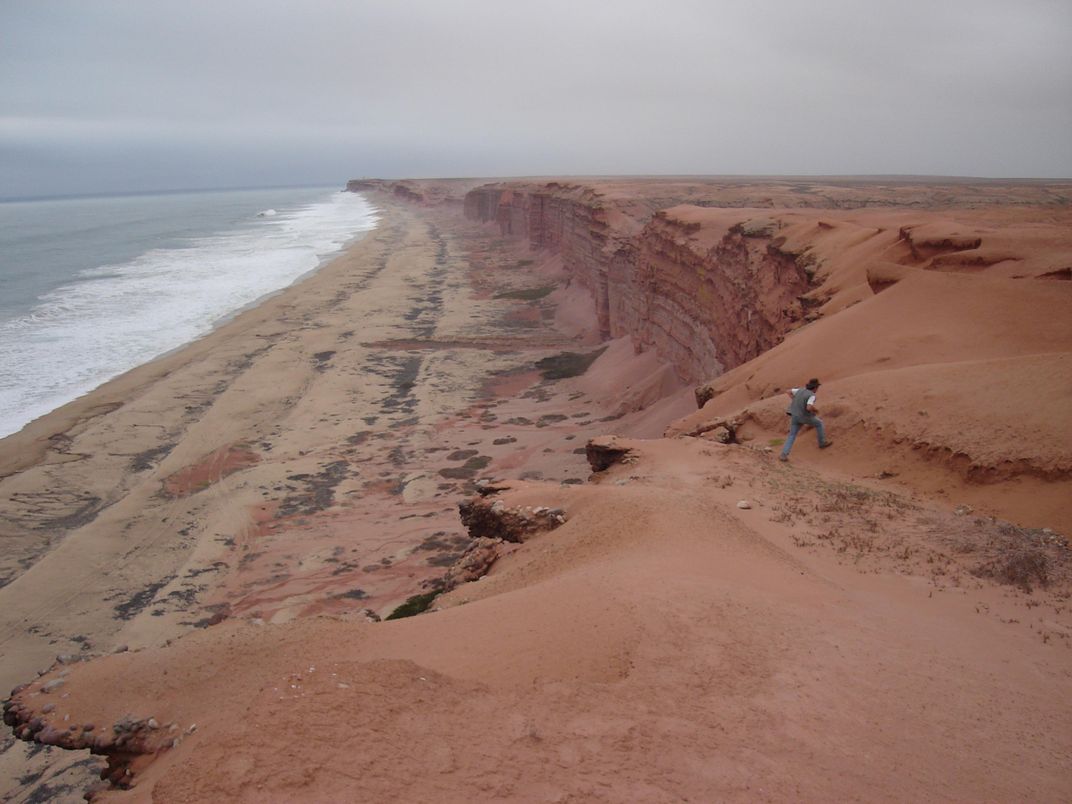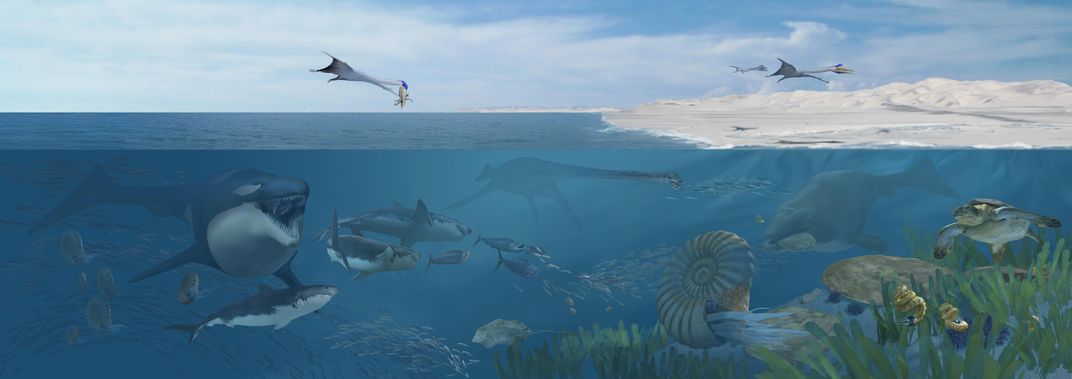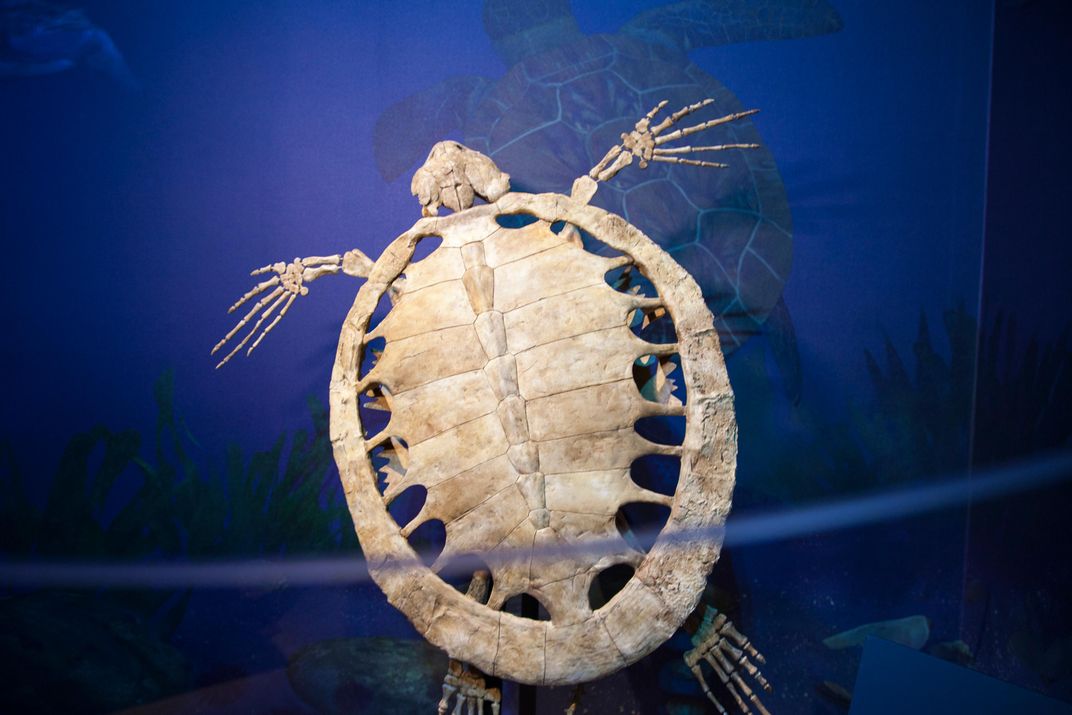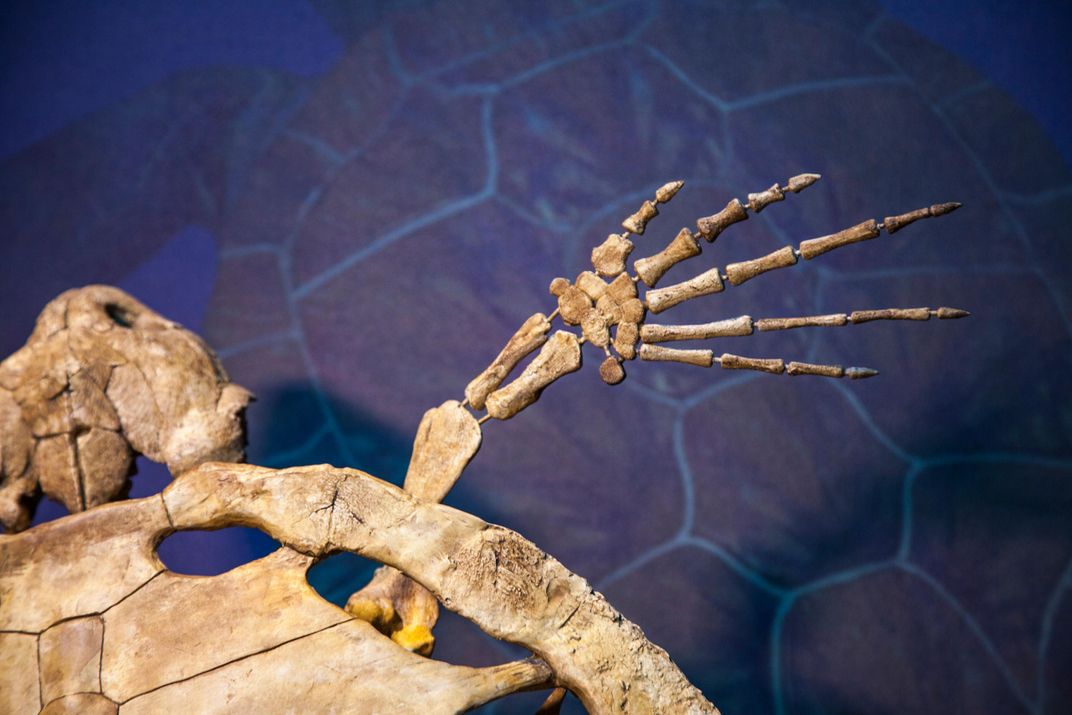Prehistoric Angolan “Sea Monsters” Take Up Residence at the Natural History Museum
The new fossil exhibition spotlights the majestic marine predators that swept into the South Atlantic shortly after it formed
/https://tf-cmsv2-smithsonianmag-media.s3.amazonaws.com/filer/9e/60/9e60cc0a-3cb9-4129-b5f9-d513a4dcccd9/img_1422.jpg)
Ravaged by decades of civil war, the southwestern African country of Angola has spent the years following its 2002 peace accords in search of a cohesive sense of national pride, endeavoring to cultivate a distinctive cultural presence on the world stage. As humanitarian campaigns work to get displaced families back on their feet and infrastructure up to date, paleontologists are providing Angola with an unlikely source of excitement and unity: the fossils of massive “sea monsters” that roamed the oceans of the Cretaceous period. Today, Projecto PaleoAngola, a multinational enterprise involving scientists from the U.S., Portugal, the Netherlands and of course Angola itself, is hard at work studying the region’s unique fossil record.
The beautifully preserved “sea monsters” of Angola are the focus of a new exhibition opening today at the Smithsonian’s National Museum of Natural History. The impressive display will give visitors a small but potent taste of the paleontological work—groundbreaking in every sense of the word—now unfolding across the country.
When the Cretaceous began nearly 150 million years ago, the south Atlantic Ocean, as we know it today, did not exist. The supercontinent of Gondwana was just beginning to break apart, and present-day South America was still firmly wedged into the recess of present-day Africa’s western coast. As tens of millions of years elapsed and a gap began to yawn between the two, the Atlantic Ocean expanded southward, bringing with it all manner of exotic marine lifeforms formerly confined to the Northern Hemisphere.
Trade winds buffeting the young Angolan shoreline made conditions in its waters particularly conducive to sea life, creating a salubrious upwelling effect that saw deep-water nutrients bubble to the surface. Giant predators called mosasaurs migrated to the new habitat in droves, and their fossilized remains today litter the easily accessible sedimentary rock of uplifted Angolan crust.
It was in 2005 that Texas-based paleontologists Louis Jacobs and Michael Polcyn first set foot in the country. The two Americans had planned the trip alongside Dutch marine vertebrate expert Anne Schulp and Portuguese paleontologist Octávio Mateus, both of whom they had encountered at technical conferences in the preceding two years (in the Netherlands and Brazil, respectively). The aim of the quartet was to secure the permission of Angolan researchers to conduct wide-ranging fossil excavations.
As it turned out, Angola’s scientists were thrilled.
“We went to the geology department at Agostinho Neto University,” Jacobs recalls, “and we walked in and said, ‘We would like to do a project with you.’ And they said, ‘Good, we want to do it.’ That’s all it took. Just cold off the street.”
With the backing of Angolan researchers, the international team went on to secure multiple grants, and the team’s fieldwork soon ballooned to spectacular proportions.
“Since 2005, we’ve had time now to prospect from the very northern part of the country, up in the province of Cabinda, all the way down to the south,” Polcyn says. “In that transect, you have a lot of different slices of geological time. We not only have these marine Cretaceous sediments, we have much younger material in the north.” The team even got their hands on the premolar tooth of a never-before-seen early African primate, a species they are excited to comment on further in the months and years ahead.

As its name suggests, the new “Sea Monsters Unearthed” Smithsonian show centers on the team’s aquatic finds, which were far too numerous for all to be included. The fossils showcased were culled from two particularly rich locations. Set against an accurately illustrated Cretaceous mural backdrop, the centerpiece is a massive and remarkably well preserved 72-million-year-old mosasaur skeleton, whose 23-foot cast will fill the exhibition space—and the imagination of whoever takes it in.
What Polcyn says is most remarkable about this Prognathodon kianda skeleton is the fact that three other sets of mosasaur remains were found within its stomach cavity—including one belonging to a member of its own species, the first-ever evidence of full-on mosasaur cannibalism. These fossilized remains offer unprecedented insights into mosasaur feeding habits, about which little was previously known.
“The strange thing is,” Polcyn says, “it’s primarily heads. This guy was eating heads.”
Visitors will get to see the cranial remains taken from the big mosasaur’s gut in a separate display case. “There’s not a lot of calories in that, which indicates [Prognathodon kianda] may have been a scavenger.”
Exhibition-goers can also look forward to seeing the picked-at bones of mosasaur and the skull and lower jaw of a prehistoric turtle species.
In time, the bones on view at the Smithsonian will return to Angola, where Jacobs and Polcyn hope they will be exhibited permanently along with the other outstanding discoveries of the ongoing PaleoAngola movement, which in addition to producing astonishing results has given several aspiring Angolan paleontologists their first exposure to the rigors of fieldwork.

While getting the chance to raise awareness of these remarkable Angolan Cretaceous deposits through the apparatus of the Smithsonian is no doubt exciting for Jacobs, Polcyn and their team, the American scientists are quick to point out that this is after all Angola’s narrative. Their aim is simply to get that story out in the world—cementing Angola’s rightful status as a hotbed of incredible paleontological activity.
Jacobs has witnessed firsthand a slow but steady pivot toward the sciences in Angola’s national agenda, one which he is eager to see continue in the years to come. “When we started,” he recalls, “it wasn’t long after the peace treaty was signed, and everybody in the earth sciences was after oil.” In the years since, though, “you see a trend where there’s more of a general appreciation of knowledge, and a maturing of ideas.”
“Sea Monsters Unearthed: Life in Angola’s Ancient Seas” will remain on view at the Smithsonian’s National Museum of Natural History through 2020.
/https://tf-cmsv2-smithsonianmag-media.s3.amazonaws.com/accounts/headshot/DSC_02399_copy.jpg)


/https://tf-cmsv2-smithsonianmag-media.s3.amazonaws.com/accounts/headshot/DSC_02399_copy.jpg)